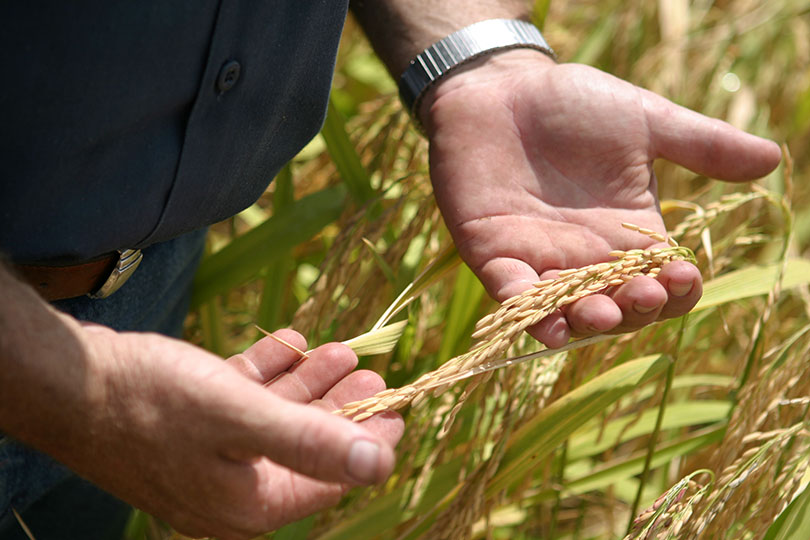By Jennifer Dorsett
Field Editor
In 2021, Texas rice farmers are expected to plant as much as, or even more than, the 184,000 acres they planted in spring 2020, according to a Texas A&M AgriLife Extension Service economist.
Even if other commodities, such as corn or soybeans, continue to bring the recent higher prices, Texas rice acreage will remain steady, Dr. Joe Outlaw, co-director of Texas A&M’s Agricultural and Food Policy Center.
Outlaw said he “wouldn’t be surprised” if planted rice acres increased 5 percent over 2020. That would bring Texas rice acres to nearly 200,000 acres in 2021, acreage not seen since 2016 and 2018.
Water availability will be weighed carefully before Texas rice farmers begin planting, some as early as February. The drought of 2011 brought planted rice acres in Texas to a low of 135,000 acres in 2012, mainly due to the lack of irrigation water available to farmers under the Lower Colorado River Authority (LCRA).
But other factors will be included as farmers make their final plant decisions, including prices for other commodities.
“Relative crop prices are very important in agriculture. A lot of times economists try to make sense out of numbers like these, and relative crop prices for things that can be grown in the area stink,” Outlaw said. “And when they stink, you tend to get the safe crop for that area, and for rice producers, it tends to be rice.”
Outlaw noted it’s important to consider the risk management strategy.
“You might have risk on the price side, but you don’t have as much risk on the ‘can-I-make-a-crop side.’ When prices start falling off, you get people moving back to rice,” Outlaw said during the recent USA Rice Federation’s State Report Outlook webinar. “Yes, corn has started moving up, but it’s just now reaching the break-even point for Texas producers. Obviously, whether you can get your crop in on time is always important.”
He ran several different models for an average 450-acre Texas Rice Belt farm with yields around 86 hundredweight per acre.
“This is your average farm that we use in extension budgets,” he said. “That average budget on the first crop shows a negative $270 return. You see there’s no government payment. The government payment should be somewhere around $145 per acre for this farm. So, you would still be looking at a $70 loss on the first crop and a $7 gain on the second crop.”
Despite the seeming futility of planting when it would appear the crop will not make money, Outlaw said it’s all about economics.
“If they can cover all their variable and contribute to their fixed costs, they’re going to do it. That’s just the way it is,” Outlaw said. “You have all that equipment that is good, but it’s very unique to rice, and you want to utilize that equipment. To me, the outlook looks very strong, and you have prices rebounding, and, frankly, I think we’re in a very good place.”
To listen to Outlaw’s report, as well as a research report from AgriLife’s Beaumont Research Center Director Dr. Ted Wilson, click here.

